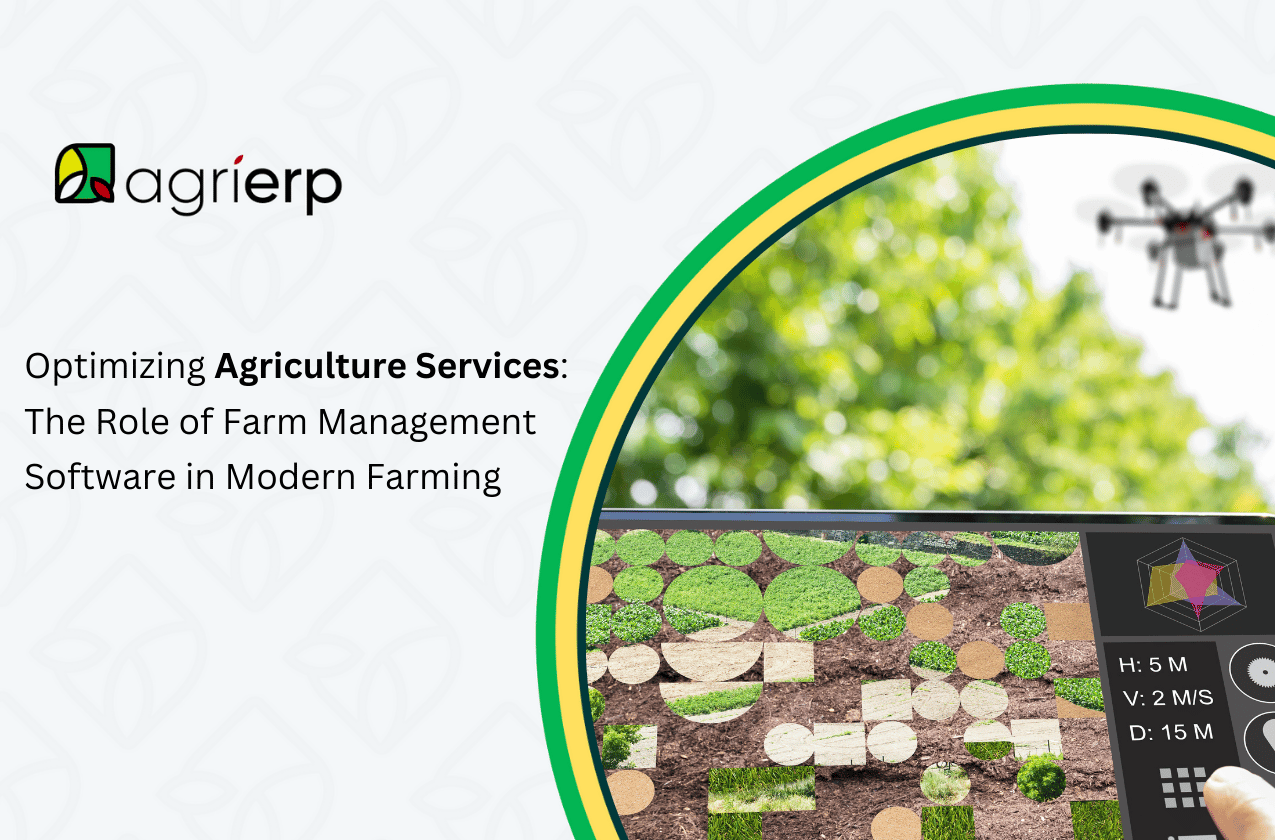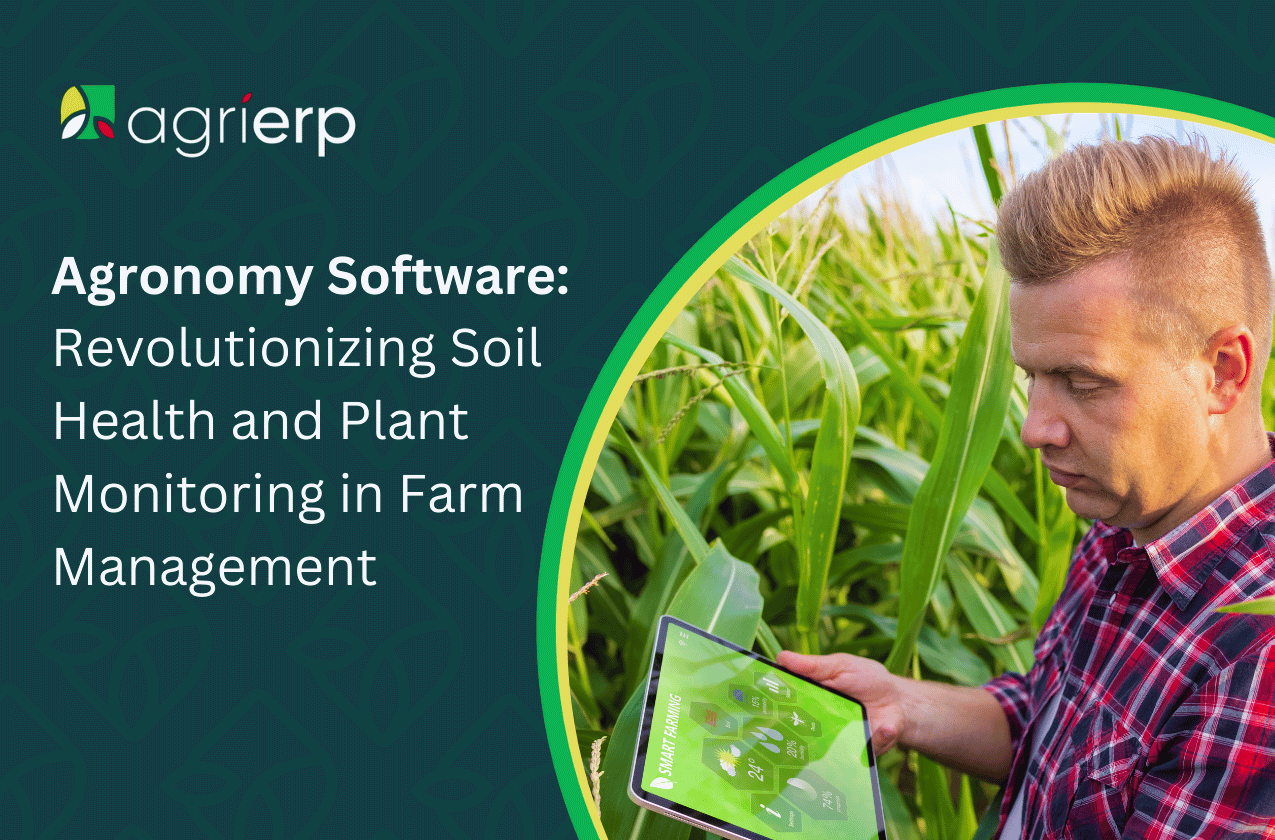Introduction
Agricultural services provide the agricultural sector access to supplies, machinery, advice, and information. They are important in assisting farmers in maximizing their available resources.
They are especially important in the expanding agricultural sector for maintaining sustainability, productivity, and efficiency. The demand for higher yields and better resource utilization drive the need for integrating technology.
Farm management software is useful in this scenario. Modern agriculture is being transformed by farm management software, which is designed to improve and simplify different farming activities. It is a complete suite of tools that helps farmers plan, monitor, and analyze farm activities. This software integrates various aspects of farming into a single platform. Thus providing farmers and agriculture service providers with real-time data and information.
Using these tools allows you to make timely and smart decisions, leading to improved productivity and profitability.
The Evolution of Agriculture Services
Traditionally, agriculture services have been dependent upon manual labor and primitive tools. Farmers and service providers faced many challenges, including unpredictable weather, pest infestations, and market fluctuations. These challenges made it hard to maintain productivity and profitability.
However, as technology advances, the agricultural services market has changed. Farm management software is a powerful tool that can resolve many traditional problems. Its use of resource management, automation, and data analytics is changing the delivery of agricultural services.
Traditional Approaches and Their Challenges
Agriculture services used to be often scattered and ineffective. Farmers had to rely on labor-intensive, error-prone manual record-keeping. Rather than being informed by evidence, decisions were made based more on experience and intuition only. This method made it more difficult to react quickly to changes in environmental or consumer needs.
Moreover, traditional agriculture services struggled with issues such as:
- Resource Waste:
Inefficient use of water, fertilizers, and pesticides due to lack of efficient monitoring and control.
- Labor Intensity:
Relying heavily on manual labor increased operational costs and reduced scalability.
- Limited Market Access:
Difficulty accessing markets and managing supply chains often leads to post-harvest losses and lower profits.
- Environmental Impact:
The lack of adoption and implementation of sustainable farming practices resulted in soil degradation and an adverse environmental footprint.
The Role of Technology in Transforming Agriculture Services
The integration of farm management software has helped farmers overcome many of these hurdles. This software provides a centralized platform for managing all farm operations, from field tasks to supply chain logistics. Collecting and analyzing data in real-time helps in accurate and timely decision-making.
Key technological advancements include:
- Precision Agriculture:
Using GPS and IoT sensors to monitor field conditions and apply inputs exactly where needed reduces waste and improves crop health.
- Data-Driven Insights:
Analyzing historical and current data using big data and machine learning to provide ideas that can be put into practice for improved resource management.
- Automation:
Implementing automated irrigation, pest control, and harvesting systems minimizes labor costs and increases efficiency.
- Digital Marketplaces:
Connecting farmers directly with buyers through digital platforms improves market access and reduces post-harvest losses.
Key Features of Farm Management Software
Farm management software offers various features that offer immense benefits to agriculture services:
Data Analytics
Data analytics is the base of modern farm management software. By collecting and evaluating data from multiple sources, the software provides valuable information about crop health, soil conditions, weather patterns, and market trends.
This data-led technique helps in making intelligent decisions, thus maximizing resource usage and predicting harvests.
For example, you can forecast the best planting and harvesting times using predictive analytics, ensuring maximum yield. Moreover, possible issues can be detected early, enabling farmers to take proactive measures.
Resource Management
Efficient management of valuable resources is mandatory for sustainable farming.
Farm management software aids in managing resources such as water, fertilizers, and labor effectively.
For instance, precision irrigation systems integrated with the software can monitor soil moisture levels and apply water only when needed. This saves water and also results in healthier crops.
Automation
Another excellent feature of farm management software is the automation of certain processes. Routine tasks such as irrigation, fertilization, and pest control can be automated, saving time and ensuring accuracy and reliability.
For instance, automated irrigation systems can adjust water levels based on real-time soil moisture data, preventing overwatering or underwatering. Moreover, automation reduces labor costs and lets farmers focus on long-term planning.
Planning and Execution
Effective planning and execution are mandatory for successful farming operations. Farm management software helps plan every farming process, from planting to harvesting. It makes detailed plans and monitors the progress of each task, ensuring that all activities are executed timely.
For example, the software can generate planting schedules based on the best weather conditions and soil health.
Monitoring
Continuous monitoring is important in maintaining crop health and providing the best growing conditions. Farm management software provides real-time monitoring of field conditions, weather patterns, and crop growth, enabling farmers to respond promptly to any issues.
For example, the software can alert you regarding possible pest infestations or disease outbreaks, enabling you to take immediate preventive measures. By providing real-time insights, the software helps maintain optimal conditions for crop growth.
Impact on Different Types of Agriculture Services
Farm management software affects different types of agriculture services:
Consulting Services
Agricultural consultants benefit immensely from farm management software. With access to real-time data and analytics, consultants can provide accurate and timely advice to farmers, leading to better crop management and yields. For example, by evaluating soil health and weather forecasts, consultants can recommend the best times for planting and harvesting.
Moreover, consultants can use the software to create personalized suggestions based on each farm’s unique needs. This approach boosts the effectiveness of their advice and helps farmers achieve better outcomes.
Logistics and Supply Chain Services
Managing the supply chain and logistics effectively is important for getting produce from the farm to the market. Farm management software simplifies these procedures by guaranteeing on-time delivery, controlling inventory, and optimizing routes. This lowers expenses while also minimizing losses due to spoilage.
For example, the software can track the location and condition of produce during transit, ensuring that it reaches the market in the best condition. It can also manage stock levels and predict demand, reducing the risk of overproduction or underproduction.
Field Services
Farm management software efficiently manages field activities such as planting, fertilization, and harvesting. This software creates schedules and monitors the progress of each task, ensuring timely execution of all activities and efficient resource usage.
For instance, the software can create a planting schedule based on soil health and weather conditions, ensuring that seeds are sown at the optimal time. It can then track crops’ growth stages and provide reminders for necessary fertilization and pest control interventions.
Case Studies
Case Study 1: Improved Crop Yield
A mid-sized farm in California implemented farm management software to streamline its operations. Using data analytics and resource management features, the farm experienced a 20% increase in crop yield. This is because the software identified the best times for planting and irrigating, leading to higher and healthier crops.
The farm used the software to track soil health, weather forecasts, and crop growth. The ability to use resources efficiently also reduces costs and increases profitability.
Case Study 2: Streamlined Supply Chain
A large Indian agricultural company used farm management software to improve its supply chain and logistics services. The software optimized delivery routes and managed inventory levels, reducing produce loss and transport costs by 15%.
To guarantee prompt and effective delivery, the company used the program to track and monitor the state of the produce while it was in transit. Through inventory management and route optimization, the business was able to save expenses while boosting customer satisfaction. In addition, the program offered market demand data that improved production planning.
Case Study 3: Enhanced Field Operations
A Brazil-based farming business adopted farm management software to enhance its field services. The software provided detailed plans for planting, fertilization, and harvesting, ensuring that all activities were executed efficiently. This led to a 25% increase in farm productivity.
The business used the software to monitor field conditions and track the progress of each process. This real-time monitoring enabled quick responses to issues that arose, leading to the best growing conditions. The cooperative achieved better crop health and yields, boosting their productivity and profitability.
Integrating Farm Management Software
Integrating farm management software into existing agriculture services consists of the following steps:
Training Staff
It is important to train the staff to use the software effectively. This includes knowledge of inputting data, generating reports, and utilizing features. In-depth training programs and constant support can help staff proficiently use the software, maximizing its benefits.
Data Migration
Transferring the existing data into the new system may involve transferring paper records into digital format or data from the old software. Proper data migration ensures that historical information is safe and can be used for future needs.
System Customization
Modify the software to meet your farm’s unique needs. This may consist of setting up certain modules, creating reports, and integrating with other systems. Customization ensures that the software meets your unique requirements.
Continuous Support
Support staff constantly to resolve any problems during the implementation process. Frequent training sessions and software upgrades can help you get the most out of the software. By setting up a support system, operations can run smoothly, and technological issues can be fixed.
Future Trends in Agriculture Services and Technology
The future of agriculture services is highly dependent on technological advancements. Several trends are expected to reshape the industry in the coming years:
Artificial Intelligence (AI)
AI will play a fundamental role in enriching farm management software. Predictive analytics, machine learning, and AI-driven automation will produce highly precise and efficient farming practices.
Internet of Things (IoT)
IoT devices, including sensors and drones, will provide real-time data on soil health, weather conditions, and crop growth. This data will be transmitted to farm management software to enhance decision-making. IoT technology enables efficient monitoring and control, leading to improved farming practices.
Blockchain
Blockchain technology will increase transparency and traceability in agriculture services. It will ensure accurate tracking of harvest from farm to market, guaranteeing food safety and quality. Blockchain can also smoothen transactions and eliminate fraud, building trust amongst stakeholders.
Robotics
Robots will automate routine tasks such as planting, harvesting, and pest control, minimizing labor costs and boosting efficiency. Robotics can perform repetitive tasks with precision, freeing up human labor for more important activities.
Sustainable Practices
There is already an increasing focus on adopting sustainable practices. Farm management software can support sustainable practices by efficiently using resources such as water and promoting eco-friendly farming methods. Sustainability will become a major factor in long-term success in agriculture.
Keeping updated and integrating new technologies can continue to improve agriculture services. This ensures that farming operations remain competitive and sustainable.
Conclusion
Farm management software is changing agricultural services, increasing production, efficiency, and competitiveness. This technology tackles many problems associated with traditional agriculture, using automation, resource management, and data analytics. As long as technology keeps developing, agricultural services will improve simultaneously.
For agriculture service providers, upgrading to modern farm management software is a major step toward achieving sustainable growth. Thus, utilize the power of technology and reap the benefits of farm management software to make your agricultural operations highly efficient.
So, are you ready to revolutionize your agriculture services? Contact our technology experts for demos or consultations. Subscribe to our newsletter to stay updated about the latest trends and technologies in agriculture services!



